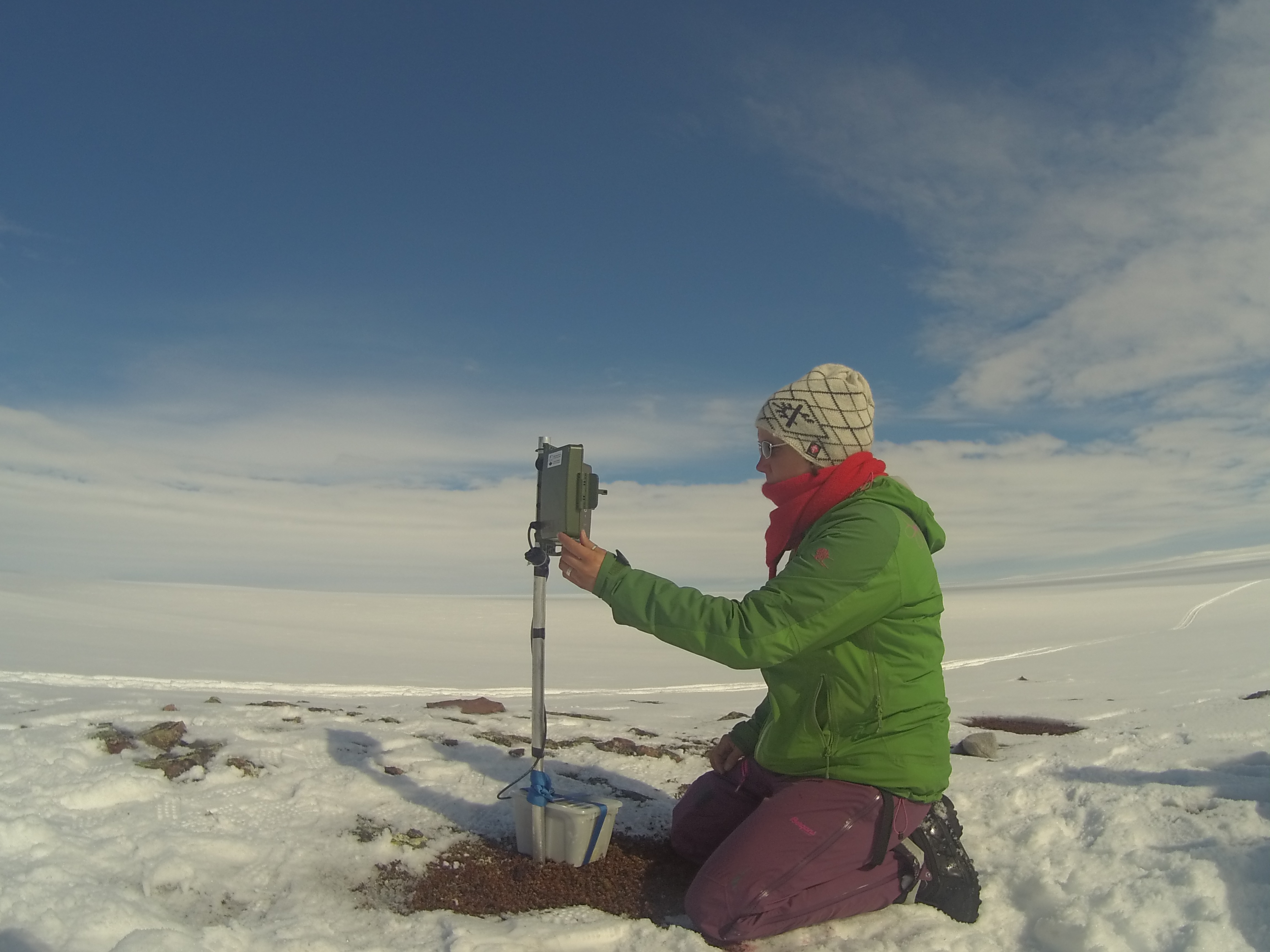In the end of April COAT Varanger conducted its spring-fieldwork. This year the spring-fieldwork consisted of the yearly deployment of sound stations by the ptarmigan module and start-up of monitoring of breeding locations for Gyrfalcon and Ravens.
Ptarmigan module: Automatic sound stations
COAT personnel has in the period, 24-26.04.2019 deployed the sound stations for this year’s monitoring in the study area just above Bergebydalen in Nesseby municipality. The sound stations is used for the complementary monitoring of willow and rock ptarmigan in the period when the cocks are territorial, i.e. the breeding part of the population of males, as we also monitor predation risk in the summer and chick production in early autumn. This year’s deployment went reasonably well, even though the spring was well on its way. Because of limited snow and many open creeks, rivers and mires in the lower end of the study area (close to forested areas), one sound station was not deployed.

One of the automatic sound stations in Varanger. Photo: John-André Henden
Monitoring of breeding locations for Gyrfalcon and Ravens
Another team of COAT personnel spent the last week of April on the Varanger peninsula to monitor breeding locations of Gyrfalcon and Ravens in and around the study areas in Vestre Jakobselv and Komagdalen. Following two years of mapping of both new/recent and historical breeding localities of Gyrfalcon on the Varanger Peninsula, the ptarmigan module have selected 15-20 localities in both the eastern and the western part of the peninsula to represent our two intensive study areas in Vestre Jakobselv and Komagdalen, respectively. They found four breeding pairs of Gyrfalcons and eight breeding pairs of ravens. The Gyrfalcon is known to have cyclic population sizes related to the density of their preferred prey, ptarmigans. However since this is the first year this monitoring is conducted we cannot say if it is a good or a bad year. Regarding ravens little is known about yearly variations in population size, therefore it will be very interesting to follow this monitoring in the years to come.